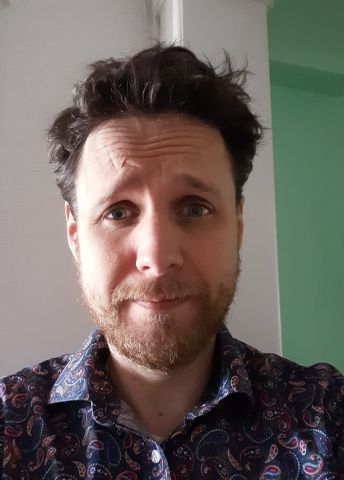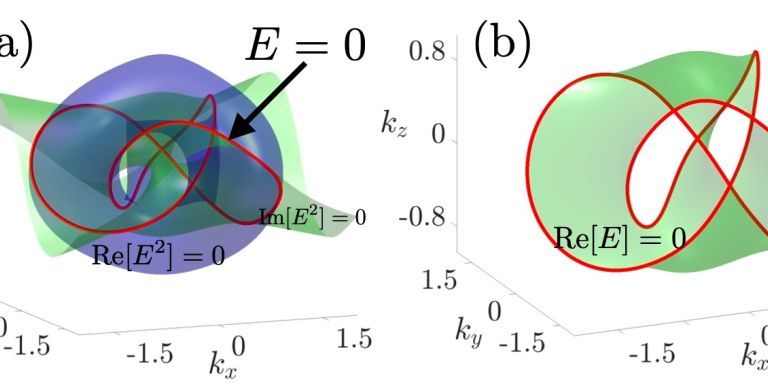
Emil Johansson Bergholtz
Professor of Theoretical Physics
Wallenberg Academy Fellow, prolongation grant 2018
Institution:
Stockholm University
Research field:
Topological systems


Wallenberg Academy Fellow, prolongation grant 2018
Institution:
Stockholm University
Research field:
Topological systems
“Most of my work used to be theoretical, but the new insights I’ve gained over the past few years have closed the gap to building practical things that can teach us something new about nature,” Johansson Bergholtz says.
The research in which Johansson Bergholtz is engaged belongs to the field of topology. Topology has seen a revival in recent years, since its mathematical tools can be used to explain unusual material states with interesting properties. Examples include topological insulators, which are materials that conduct current on their surface but are insulating in their interior.
Topological systems are usually described in isolation from their surroundings. Johansson Bergholtz made a breakthrough when he realized how his knowledge of geometrically frustrated materials could help in understanding other topological systems, i.e. systems that interact with their surroundings.
Experimentalists had already published interesting findings in the field, but no theoretician had managed to gain a more general understanding.
“My research team and I took the opportunity to use our knowledge in a new arena. Our theories have now been confirmed in optical and mechanical systems, as well as electrical circuits. We’ve spent the past three years understanding these systems, and describing them in the form of a theoretical framework.”
Some of the mathematical details in the new framework were already present in theoretical physics in the mid-1900s. But it has only recently been possible to confirm the theories experimentally.
“These are exciting times, in which physics, mathematics and materials science are moving closer together.”
“The grant enables me to adopt a more long-term approach to my research and gives me greater freedom to pursue my own ideas. To succeed, it’s important to have that flexibility.”
Topological materials are often mentioned as very promising building blocks for the quantum computers of the future. But Johansson Bergholtz stresses that there is a very long way to go.
“It’s an oft-repeated mantra that topological systems can be used in quantum computers. But to be honest, that’s a really long way off. Modern computers are so good that it will take a long time before quantum computers are better at the tasks computers are expected to perform,” he says.
However, he believes we may well see less complex quantum applications, such as sensors of various kinds, much sooner.
One potential application is a sensor for dark matter or, in practice, for axions. These are hypothetical elementary particles, but are considered by some to be capable of explaining the presence of dark matter in the universe. One of those who believe so is Nobel laureate Frank Wilczek, now a professor at Stockholm University.
“Since experiments have already shown how our theories can be used to build effective sensors, all we need to do now is find interesting things to measure. One target could be dark matter, and we’re discussing with Wilczek’s research team how best to do this.”
The advantage of the sensors is their extreme sensitivity, which is needed to register the very weak signals that axions are believed to emit.
“But since no one yet knows whether axions exist, it’s a long shot – albeit one well worth testing,” Johansson Bergholtz says.
He thinks it is still too early to say where the new field will lead.
“Five years ago I couldn’t predict where we would be today, and the same goes for five years from now. But I’m sure it’ll be an exciting journey.”
Johansson Bergholtz considers it important as a theoretical physicist to have the courage to pursue new ideas, since they may lead to inadvertent discoveries. This becomes clear as he explains how the framework for open topological systems came about. Every morning before breakfast it is his custom to skim through the latest published research articles in various fields.
“One morning I found an article in which knowledge from my field was applied to optical systems. The findings had raised questions that I realized my team could answer. Later the same day I discussed the idea with my PhD students, and we had an article ready for publication a few weeks later,” he says.
The article in question is Johansson Bergholtz’s most cited ever; it opened the door to the new research field.
“One of the PhD students who was involved now heads their own research team at the Max Planck Institute. I take more pleasure in the successes of my students than I do in my own.”
When he began his studies, he chose subjects like economics and history. But it was not until he changed over to mathematics and physics that he felt he had found his niche.
“It gave me a way to organize my thoughts. It was attracted by the opportunity to create a detailed understanding of a field, but it was never my goal to attain a PhD, let alone become a professor.”
Both his parents are grade school teachers, and he himself long believed he was destined for a career as a schoolteacher. But as his academic successes mounted up, things turned out differently.
“I achieved my career goals a long time ago, so if I can remain at this level of research for a while, I’ll be very happy.”
Text Magnus Trogen Pahlén
Translation Maxwell Arding
Photo Magnus Bergström, Emil Johansson Bergholtz